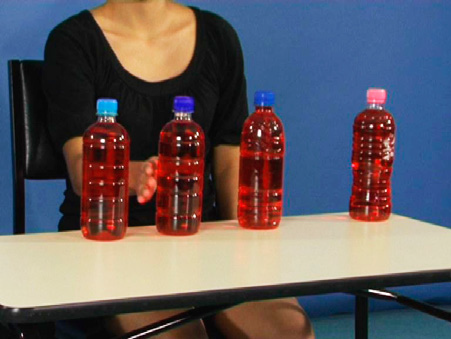AIM:
To improve spatial accuracy of reaching and grasping tasks
Rationale:
Practice is set up so that excessive movements are constrained and feedback about accuracy is implicit in the task.
Equipment:
- 4 cylindrical objects, e.g. bottles or cups
- Table
- 2 chairs
Key Points:
- Ensure patient is sitting upright with the feet supported on the floor
- Arrange objects on the table so that excessive hand aperture is constrained during grasp and release
- Encourage the patient to grasp, move and release the objects, without touching the other objects and without resting the arm on the table
Common Errors:
- Patient supports forearm on the table
- Objects are spaced too wide apart, so the patient is not challenged to decrease the excessive aperture of the hand during grasp and release
- Objects are positioned so close together that it is not possible to complete the task without touching the other objects (even for a person without ataxia)
Progression and Variety:
- Place objects closer together
- Increase reach distance
- Increase speed
- Decrease thigh support in sitting
- Add variety by using other tasks to constrain excessive movements, e.g. picking up a pen lid from within a sticky tape roll, reaching for a object through a hoop
